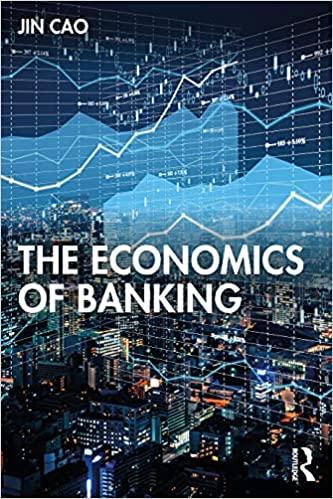Consider a one-good, three-date economy: there are infinitely many ex ante identical consumers, each endowed with one
Question:
Consider a one-good, three-date economy: there are infinitely many ex ante identical consumers, each endowed with one unit of resource at \(t=0\). Consumption takes place either at \(t=1\) or \(t=2\), while the timing preference only gets revealed at \(t=1\). With probability \(\pi\) a consumer is an impatient one (type 1 consumer), who only values consumption at \(t=1\), while with probability \(1-\pi\) a consumer (type 2 consumer) is a patient one, who only values consumption at \(t=2\). A consumer's type is private information.
Let \(c_{i}\) denote the consumption of a type \(i=1,2\) consumer, and expost, the utility from consumption is \(u\left(c_{i}\right)=\frac{1}{1-\gamma} c_{i}^{1-\gamma}\) with \(\gamma>1\).
The economy has two technologies of transferring resources between periods: storage technology with gross return equal to 1 , and a long-term investment technology with a constant gross return \(R>1\) at \(t=2\) for every per unit invested at \(t=0\). If necessary, an ongoing long-term project can be liquidated, or, stopped prematurely at \(t=1\), with a return \(0<\delta<1\).
(a) Specify the social planner's problem, who wants to maximize a consumer's expected utility at \(t=0\) by allocating her endowments between two technologies.
i. Compute the optimal allocation, and consumption for each type's consumer-denote the solution as \(\left(c_{1}^{*}, c_{2}^{*}\right)\). Show that \(1
iii. What will happen to the consumers' optimal consumption when \(\gamma \rightarrow+\infty\) ?
iv. If the utility function takes the form \(u\left(c_{i}\right)=\sqrt{c_{i}}\), redo exercise (a) i. Do you still see \(1
(b) Suppose that the economy is in autarky such that every consumer has to allocate her endowments between two technologies by herself at \(t=0\). Show that the consumer's expost consumption is inferior to the solution in (a) i.
(c) Suppose there is a bond market available at \(t=1\). At \(t=1\) competitive bond issuers purchase illiquid assets from impatient consumers, issue bonds against these illiquid assets, and sell bonds to the patient consumers (who can pay with the proceeds from their liquid assets). Each unit of bond bought at \(t=1\) will deliver one unit of consumption good to the bond holder at \(t=2\).
i. Compute the equilibrium bond price;
ii. Show that the consumer's ex post consumption is inferior to the solution in (a) i.
(d) Suppose there is a competitive banking sector in the economy, in which banks take consumers' endowments as deposits at \(t=0\) and allocate between the two technologies. Consumers withdraw \(c_{i}\) at \(t=i\) according to their type \(i\).
i. Show that banks can replicate the optimal solution achieved in (a) i.
ii. Compared with the result in (b), how can banks improve social welfare in the economy?
Step by Step Answer:






